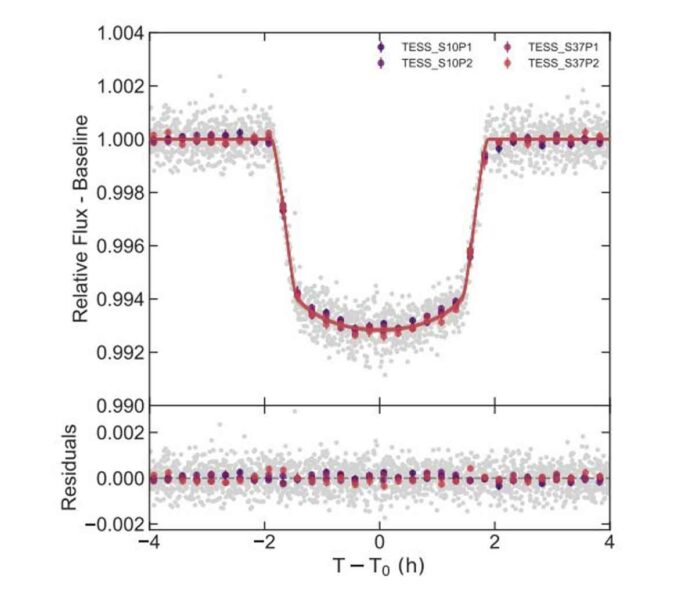An international team of astronomers has discovered a new “hot Jupiter” exoplanet. They have used NASA’s Transiting Exoplanet Survey Satellite (TESS) to make this discovery. The newly discovered alien world is estimated to be nearly three times the mass of Jupiter. The exoplanet orbits TOI-778 which is a rapidly rotating star. The discovery is detailed in a paper published on the arXiv pre-print server on December 16th.
TESS is surveying approximately 200,000 of the brightest stars near the sun in search of transiting exoplanets. It has identified over 6,100 candidate exoplanets so far. Among these candidates, 282 have been confirmed.
Now, another exoplanet monitored by TESS has been confirmed by a group of researchers led by Jake T. Clark of the University of Southern Queensland. They report finding a transit signal in the light curve of TOI-778. TOI-778 is a rapidly rotating early F3V-dwarf star and it is also known as HD 115447. Follow-up ground-based photometry and velocity measurements confirmed the signal’s planetary nature.
The newly discovered planet was given the designation TOI-778 b. It has a radius of 1.37 Jupiter radii and is about 2.8 times the mass of Jupiter. TOI-778 b orbits its host every 4.63 days at a distance of approximately 0.06 AU. The equilibrium temperature of the planet was estimated to be 1,561 K.
Astronomers classified TOI-778 b as a “hot Jupiter” exoplanet based on its parameters. In general, “hot Jupiters” have characteristics similar to the solar system’s largest planet Jupiter. Both Jupiter and the new exoplanet has an orbital period of less than 10 days. Because they orbit their parent stars so closely, such exoplanets have extremely hot surfaces. When compared to other “hot Jupiters” of similar mass, TOI-778 b appears to be slightly inflated.
TOI-778 is the parent star of TOI-778 b. It is a fast rotator and has a rotational velocity of nearly 40 km/s. The star is roughly 71% larger and 40% more massive than the sun. TOI-778 is estimated to be 1.95 billion years old and has an effective temperature of around 6,700-6,800 K. The star’s distance was calculated to be 528 light years.
The study also discovered that TOI-778 b’s orbit is nearly parallel to the stellar equator, with a host star sky-projected obliquity of 19 degrees. Astronomers believe that this planet moved slowly through its host’s disc before arriving at its current location.
“TOI-778 b joins a group of other hot Jupiters with well-aligned orbits. It implies that disc migration is the most likely explanation for their evolution to their current positions,” the paper’s authors concluded.

